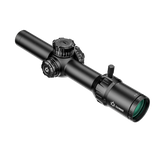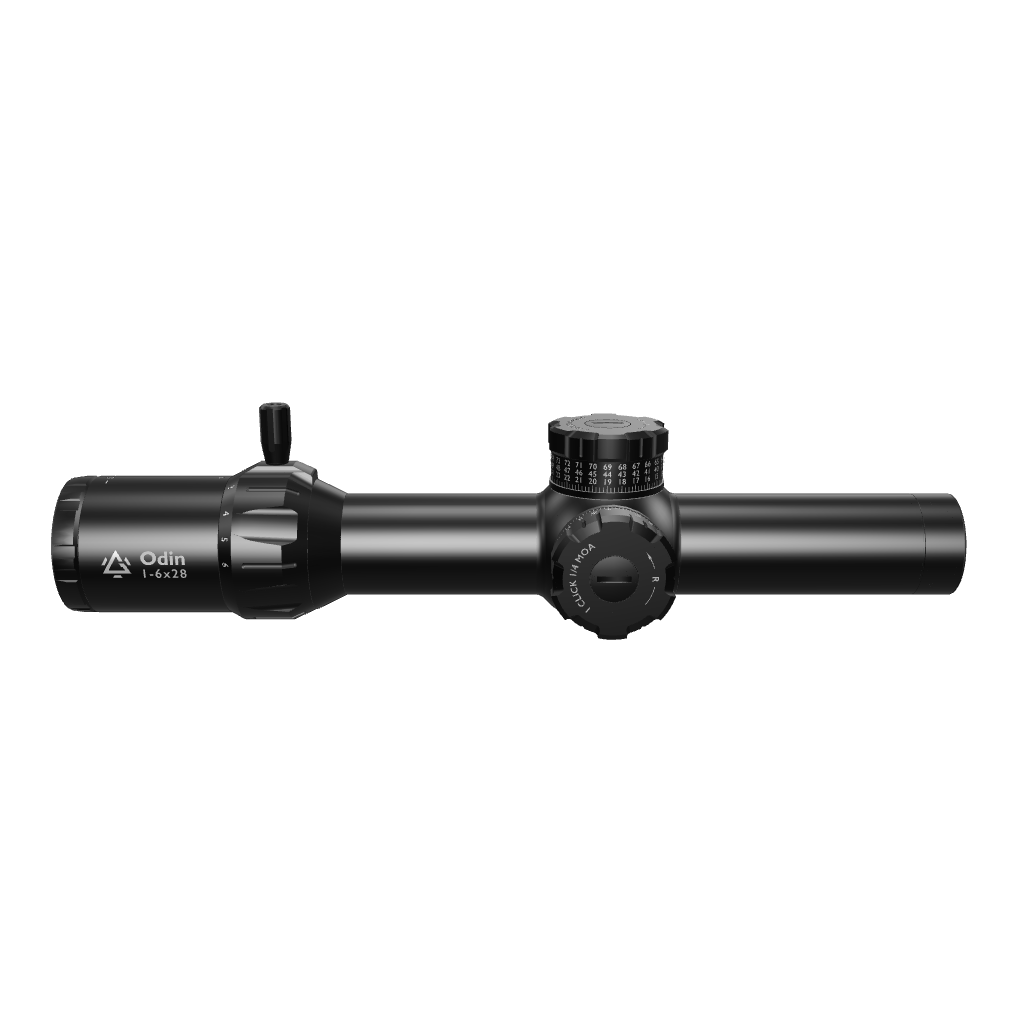How to Find the Best LPVO Reticle
For many AR-15 enthusiasts, a Low Power Variable Optic (LPVO) is a big step in upgrading their rifle. This is a versatile scope that offers the best of both worlds: a true 1x magnification for close-quarter combat and the ability to zoom in for precise shots at mid-distance.
Of course, many would struggle with choosing a suitable LPVO reticle for their setup. Having the wrong one could never quite feel right, no matter how you try to get used to it.
In this guide, we’ll take a look at the different options and list the perfect reticle for LPVO applications, and hopefully, you’ll find the one that fits your needs.
What are the Different Reticle Types Common in LPVOs?
The reticle is the aiming point you see when you look through your scope. In LPVOs, they've evolved far beyond simple crosshairs.
Modern designs from LPVOs help with rapid target acquisition, holdovers for distance, and windage adjustments.
The best part is that most LPVOs have etched reticles, meaning they are physically cut into the glass and will be visible even if your battery dies. Some also feature an LPVO illuminated reticle to make the aiming point stand out against dark backgrounds or in low light.
Here are the most common types you'll encounter:
-
Simple Dot/Crosshair: The most basic option. It's clean, simple, and excellent at 1x for fast, red dot-style shooting. However, its use is very limited when long-range shooting is in question, unless you manually dial your turrets.
-
Duplex Reticle: An evolution of the crosshair, featuring thicker outer posts that draw your eye to the finer crosshairs in the center. This is a classic hunting design that’s clean but still lacks holdover markings.
-
BDC (Bullet Drop Compensator) Reticles: These are designed with markings that show you the travel trajectory of certain calibers at various distances. They are fast and intuitive, but can sometimes be imprecise if you don’t calibrate the reticle according to caliber. Often popular is the ACSS reticle, whic is a more detailed BDC type.
-
Mil/MOA Reticles: These use standardized units of angle measuring (milliradians or minutes of angle) for holdovers and wind calls. An LPVO mil reticle provides universal markings that work with any caliber, as long as you know your ballistics. They offer the highest precision but require more expertise. Often used by hunters

Which Reticles Work Best for LPVOs?
While there is no "best" reticle for LPVO, the use case truly depends on your primary application. Because an LPVO is a jack-of-all-trades optic, the ideal reticle enhances its versatility without compromising its performance, no matter which magnification range.
For general-purpose use on an AR-15, a BDC reticle is often the top choice because it balances speed and precision. At 1x, the illuminated center dot or chevron acts like a red dot for quick aiming, which is perfect for dynamic shooting scenarios, 3-gun competitions, or even hunting in varied terrain.
If your focus is on precision shooting at longer distances, an LPVO with a mil reticle is superior. It allows for more accurate calculations for bullet drop and windage, making it a favorite among designated marksmen. The trade-off is a slightly busier sight picture and a steeper learning curve.
Simple dot or crosshair reticles are becoming less common in new LPVOs, as they don't fully leverage the "variable" power aspect of the optic. They are best suited for shooters who stick to 1x.

What to Consider When Choosing Between LPVOs with Different Reticle Types
Selecting the right LPVO reticle requires you to think honestly about how you'll use your rifle, and this sometimes means trying it before you buy it.
Don't just pick the most complex reticle because it looks cool. Nobody likes a cluttered field of view, and this can be especially critical in self-defense situations.
Here are the key factors to consider:
-
Primary Use Case: Will this be for home defense, competition, hunting, or long-range target shooting? For close-quarters focus, a simple, bright dot is king. For distance shooting, you need holdover marks.
-
Your Expertise: BDC reticles are user-friendly and great for beginners, but Mil/MOA reticles are more complex; you have to know ballistics.
-
Distance: If most of your shooting is within 200 yards, a complex grid is unnecessary. A simple BDC or even a duplex reticle will serve you well. If you plan on regularly shooting past 300 yards, a more detailed reticle becomes essential.
-
Illumination: Think about how important low-light performance is to you. An LPVO with an illuminated reticle is critical for shooting at dusk, dawn, or indoor ranges.
Keep in mind, if you want to use your LPVO like a red dot at 1x, you'd best check if your illumination is “daylight bright”. Additionally, some riflemen swear by an LPVO green reticle rather than red because their eyes may be more sensitive.

When Does a Christmas Tree Reticle Make Sense for Your LPVO?
A Christmas Tree reticle is a specific type of Mil or MOA grid that features a full pyramid of holdover points below the center crosshair. These dots or hash marks expand outwards as they go down, providing numerous aiming points to correct for both bullet drop and wind simultaneously.
An LPVO with a Christmas tree reticle makes the most sense when you need to make fast, precise shots on targets at unknown and varying distances, especially in windy conditions. It's the go-to choice for PRS (Precision Rifle Series) style competitions or for a designated marksman role where you may not have time to dial your turrets for windage.
Instead of holding an estimated amount of space into the wind, you can select the exact dot on the grid that corresponds to your ballistic solution. It offers the ultimate in long-range precision for an LPVO, but be warned: the sight picture can be very busy and distracting for close-range work.
Affordable LPVOs from GUNNR
You don't need to spend a fortune to get a high-quality optic with a functional and durable LPVO scope reticle.
Our Gunnr optics are constructed with German Schott lenses that remain clean and clear, and the durable 7075 Aluminum Alloy, without breaking the bank.
Speaking of which, our Gunnr Christmas tree reticle comes with different magnification ranges like the Odin 1-6x28, the Odin 1-8x25, and the Odin 1-10x28.
What really makes the Odin scope stand out is that all of them have FFP reticles. This reticle type is one of the most popular and standard reticle types among long-range enthusiasts, as it stays consistent and true no matter how much you tweak your magnification.
The flexibility of the FFP reticle, combined with durability and locking turrets, caters to riflemen who are looking for absolute stability and longevity, whether you’re using it for tactical applications, competitions, hunting, or self-defense.

Conclusion
The reticle is the soul of the LPVO. A proper LPVO reticle design could really make a difference in your shooting experience.
Most shooters go for a simple reticle with minimal obstruction, while others feel more comfortable with more detail, like a starburst. If you’re new to the AR-15 world, simple budget options are a good start once you gain a feel for a certain reticle.
For simplicity, a BDC would be your best bet. For precision, a mil-grid for long-range applications can be a recommended option.
Take the time to assess your needs, preferences, and main concerns, take a look at all the diverse options, and you'll end up with an optical setup that feels just right.
You might also be interested in these 7 common optic myths that lead shooters astray.







